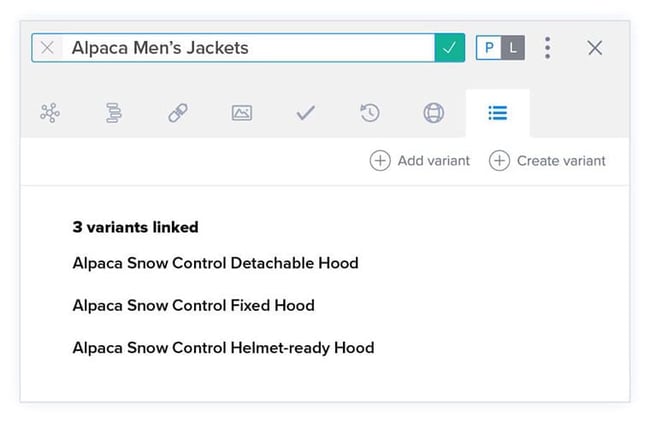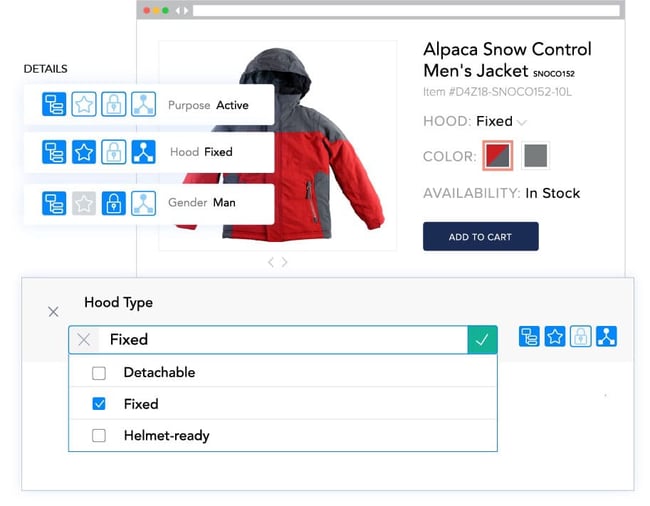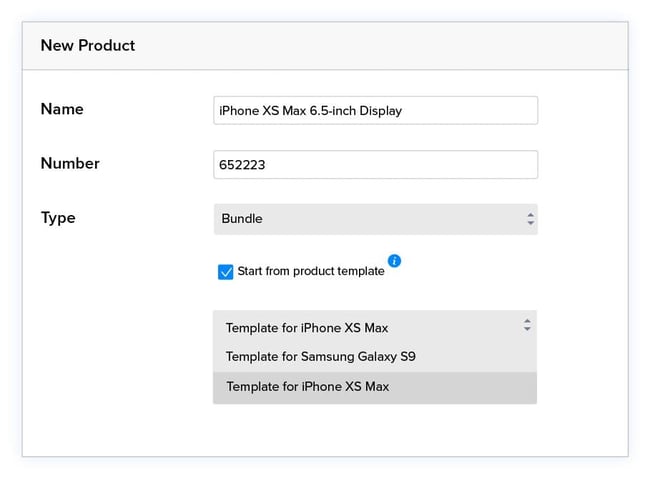There are things in life we love to repeatedly do. Just like the Swedish people, who can’t imagine a day without ‘Fika’, a short but sweet moment over coffee and cake. However, there are also repetitive tasks that we would all prefer to skip over.
Regardless of the job and industry, repetitive tasks unnecessarily take too much of our time and effort. This becomes even more mind-numbing when you need to repeat a similar course of action, altered only by minute details.
The frustration is compounded by the fact that a single mistake can have dire consequences (like a burnt dinner or a wrong sales figure in the financial report), so you are forced to pay attention at every step of the task.
Such a scenario easily translates into the everyday lives of many people who work in the eCommerce industry. Products are rarely marketed as individual stand-alone items. Rather, they belong to ranges, collections, or lines, with many different product variants and product attributes.
It can be challenging and time-consuming when you need to manually create content for a group of almost identical products multiple times, differing in the value of only one product attribute, such as scent or color.
Now imagine doing that for an entire catalog with over 1000+ SKUs, and you can easily see why this seemingly simple task can be a day's worth of work or more.
In this article, you will learn how you can have an easier time managing and selling your products by knowing how you can efficiently work with product variants.
What are product variants?
Product variants are the options of a ‘master’ product with different attributes, such as different scents, colors, pricing, materials, or any other specific features.
On some platforms, product variants are also referred to as a parent and child relationship. The parent is the main product, while the child is the variant of the parent.
Examples of product variants are:
- A TV with different resolutions and screen sizes
- An Apple Watch with different storage space and case material
- A T-shirt with different colors and sizes
- A bag of chips with different flavors and packaging size
To the customer, the undoubted benefit that product variants bring is a wider and more personalized offer.
In eCommerce solutions, such as Magento, presenting such options as a variation of the product, improves how easy it is to navigate between the combinations of options. And it’s an established truth that the number one feature that product pages must offer is quality product information.

How product variants can drive sales
Coming home for a holiday can be a wonderful experience, or an awkward one (yes, we all have that uncle that asks weird questions at family gatherings).
When products get together, it is exactly the same. They struggle to get along as one product family. When you are the person that creates the structure for the product content offered in a webshop, you know that the relationship between the product variants matters a lot, and thus you should be able to decide between the nature of the variant-defining attributes.
You can create a parent-child relationship between certain products so that child will inherit all attributes from the parent, or make certain product attributes mandatory on some products and must have a value input (like the sizing and colors of apparel).
An example would be the Alpaca Snow Control Men's Jacket (shown in the photo below). It has an inherited Hood Type attribute from the Jacket parent product, with the option of Detachable, Fixed, or Helmet-Ready. This Hood Type attribute is a required and variant-defining attribute that must be associated with this particular jacket.
 Product attributes are an important factor that highlights the differences between each variant
Product attributes are an important factor that highlights the differences between each variant
You can also lock the value of a product attribute to a certain category. For example, you may want to associate a certain range of jackets to be only part of the Winter collection. In this case, the Winter value should be locked to the Season category.
Having product variants presented in an intuitive, compact, and single-page way enables customers to easily compare the other product options. Therefore, offering product variants creates an opportunity to drive more sales.
There are many actively searching buyers who are willing to buy two bars of soap of different scents or three pillows of different colors that will just look good together on a sofa.
If you balance the number of options so as not to trigger decision paralysis, offering variants can really improve your bottom line.
Create templates for product variants
When you need to add new products, you will save plenty of time if you reuse an attribute structure that you’ve already created. What you need is to be able to save it as a template, so you can apply it to as many products as you want.
Most eCommerce platforms or third-party marketing platforms provide their clients with an option to quickly create a template, either as a pre-built Excel spreadsheet or through their own online system.
The next time you need to create nearly the same product, you don’t need to start over. It is enough if you just see the values that are not the same.
Work with product variants in PIM
Efficient product content cannot be created with the help of only a webshop platform.
Although most of the popular ones, such as Shopify or Magento, do offer features for handling all of the variations of your products, it might not be enough when you want to sell them across multiple sales channels.
The choice you have is either manage each of them separately (separate product databases for an online store, printed catalogs, POS systems, etc.), or implement a PIM platform, which allows you to do the product content work once and publish wherever this content is needed.
It would be difficult to implement a successful omnichannel sales strategy without a PIM system in place.
The benefits of omnichannel-ready Product Information Management are numerous; the more SKUs you offer, the more benefits there are.
Among others, an omnichannel-ready PIM will enable you to:
- create a single source of truth for all the sales channels and all the products
- eliminate product information inconsistencies
- improve time to market
- enable collaboration on product information
The customers tell us that they like to engage in multiple ways.
Kroger’s CEO Rodney McMullen
Most probably, your webshop offers many different variations of your products; if so, take a hard look at how efficiently you work on their product information. A dedicated product information management solution, which has functionalities to make working with product variants a breeze, will help you with it.

Working with product variants can be challenging, but Bluestone PIM is here to help. Contact our advisors or book a guided demo to learn how PIM can simplify the way you manage your product information and sell more products in digital channels.
You might also like

Bluestone PIM Partners with E-commerce Platform...

The Ultimate Cheat Sheet on Omnichannel


